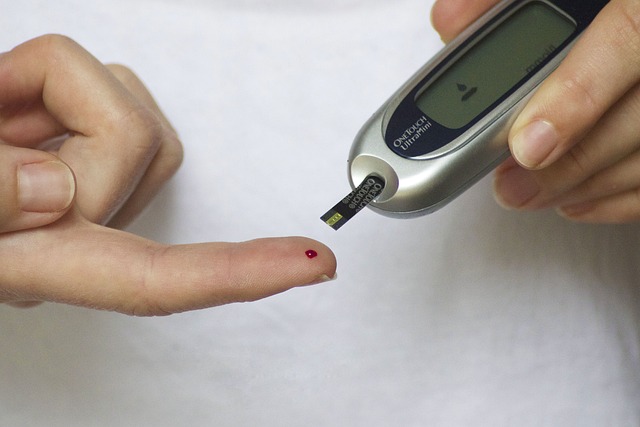Underlying all diabetic conditions is poor sugar control or hyperglycemia. Hyperglycemia can be due to a lack of insulin as in Type 1 diabetes or insulin resistance as in Type 2 diabetes. In either case, the corresponding diabetic complications that evolve over time in many diabetics, the cardiovascular disease, retinopathy, peripheral nerve and vascular damage, represent the effects of sustained hyperglycemia. Until recently, the mechanisms by which diabetic vascular damage developed eluded researchers. Although multiple, seemingly discrete biomarkers had been identified, no single, unifying mechanism was understood. It turns out that diabetics, both Type 1 and Type 2, are severely deficient in thiamine or vitamin B1 and that thiamine is required for glucose control at the cell level. Why is thiamine deficient in diabetics and how does thiamine manage glucose control? The answers to those questions highlight the importance of micronutrients in basic cellular functioning, particularly mitochondrial functioning, and the role of excessive sugar in disease.
Thiamine
Thiamine (thiamin) or vitamin B1 is an essential nutrient for all living organisms. The body cannot synthesize thiamine by itself and so it must be obtained from diet. Thiamine is present in yeast, pork, fish, various nuts, peas, asparagus, squash and grains (unprocessed) and because of the severity of the illnesses that thiamine deficiency evokes, many processed foods have been fortified with thiamine. Nevertheless, thiamine deficiencies thought resolved by modern nutritional technologies, are emerging once again. Modern thiamine deficits appear to be caused by diets of highly processed, carbohydrate and fat laden foods, exposures to thiamine blocking factors such as alcohol and those found in many medications (fluoroquinolones, possibly others) and vaccines (Gardasil, possibly others), environmental toxicants and some foods. Thiamine deficiency is also common after bariatric surgery and in disease processes like AIDS and cancer. Over the course of our research, thiamine deficiency has been observed in previously healthy, young, non-alcoholic patients, post medication or vaccine, along with symptoms of dysautonomia.
Thiamine Deficiency Symptoms
Thiamine deficiency at its worst is linked to severe decrements neurological functioning, like Wernicke’s Encephalopathy that include noticeable ataxic and gait disturbances (loss of voluntary control of muscle movements, balance and walking difficulties), aphasias (language comprehension and/or production difficulties), and if it persists, Korsakoff’s Syndrome (severe memory deficits, confabulations and psychosis). Early on though and as the deficiency is evolving, thiamine deficiency presents much like the mitochondrial disease that it is – with the myriad of seemingly unrelated symptoms, that are not typically attributed to thiamine deficiency, such as fatigue and excessive sleeping, hair loss, cardiac dysregulation, GI disturbances such as gastroparesis and others, autonomic instability, demyelinating syndromes and hormone irregularities, especially thyroid, but also reproductive hormones. In diabetics, thiamine deficiency may present as ketoacidosis, lactic acidosis, hyperglycemia and persistent encephalopathy. Thiamine deficiency attacks the mitochondria. Mitochondrial dysfunction presents diversely. In fact, with mitochondrial dysfunction, symptoms are as varied as the individuals who experience them. Diabetes, may be just one more phenotype of among many.
Thiamine Deficits in Diabetes
With diabetes, thiamine deficiencies are common, though likely under-recognized. Diabetics are susceptible to thiamine deficiencies mediated by diet and exposures like most of the Western world, but also have added risk factors associated with the disease itself. In diabetics, kidney function is altered which decreases thiamine reabsorption while increasing thiamine excretion. In some people, diabetic and non-diabetic alike, thiamine deficiency can be exacerbated even further by a mutation in the thiamine transporter protein that brings thiamine into the cells.
How thiamine deficient are diabetics? One study found that in comparison to non-diabetics, individuals with Type 1 and Type 2 diabetes had 75% and 64% less thiamine, respectively. Think about this for a moment. If diabetes predisposes individuals to thiamine deficiency without any other intervening factors, imagine what happens when diabetics are nutritionally thiamine deficient, exposed to the myriad of environmentally or medically thiamine-depleting substances currently on the market, or worse yet, carry the thiamine transporter mutation. Alone, but especially in combination, thiamine deficiency diseases, many of which align with diabetes-related complications, could be magnified exponentially. The remarkable thing about this new research is that treatment is easy, it requires only dietary changes and high dose thiamine therapy alongside normal diabetes interventions. (Although one suspects with Type 2 diabetes at least, dietary changes and thiamine supplements could replace other medications entirely). Backing up a bit though, let us look at the research and mechanisms by which thiamine moderates sugar exposure at the cell level and how thiamine modifies those processes.
The Hyperglycemic Cascades
Under normal conditions, with appropriate dietary nutrients and physiological concentrations glucose, dietary sugars are converted to ATP in the mitochondria. The byproduct of that reaction is the production of free radicals also known as oxidative stress or reactive oxygen species (ROS). ROS are neither good nor bad, but too much or too little ROS wreaks havoc on cellular functioning. The cells can clear the ROS and manage oxidative stress via activating antioxidizing pathways and shuttling the excess glucose to secondary, even tertiary processing paths. However, under conditions of chronic hyperglycemia, mediated by diet or diabetes, the conversion of glucose to ATP becomes dysregulated, the production of ROS become insurmountable and a cascade of ill-effects are set in motion.
Too much ROS cause the mitochondria to produce high concentrations of an enzyme called superoxide dismutase (SOD) in the endothelial cells of both the small and large blood vessels. SOD is a powerful antioxidant, however, like everything else, too much for too long causes problems. Superoxide then upregulates the five known chemical pathways that alone and together perturb vascular homeostasis and cause the diabetic injuries that have become commonplace. Technically speaking, hyperglycemia causes:
- Increased activation of the polyol pathway
- Increased intracellular formation of advanced glycation end products (AGEs)
- Increased AGE receptor expression and ligands
- Upregulated protein kinase C (PKC)
- Enhanced hexosamine pathway activity
In non-technical terms, elevated concentrations of circulating glucose increase the production of ROS and superoxide, but also, and as a compensatory survival reaction to maintain cellular health, secondary and tertiary glucose processing pathways come online. These backup pathways are not nearly as efficient and so produce additional, negative metabolic byproducts which can damage blood vessels if not cleared. The body is capable of clearing these byproducts, but only when the reactions are short term and the nutrient substrates feeding those reactions are present. If, however, the nutrients are deficient and/or the hyperglycemia is chronic, or both, those clearance mechanisms are insufficient to remove the toxins. The toxic byproducts build up and diabetic vascular diseases ensue.
High Dose Thiamine Therapy and Diabetes
Over the last decade or so, researchers have found that thiamine normalizes each of these five aberrant processes activated by sustained hyperglycemia and implicated in diabetic vascular complications. High dose thiamine (300mg/day) reduces the biochemical stress of hyperglycemia human subjects. Additionally, thiamine can prevent and/or offset incipient vascular damage in diabetic patients. Finally, in rodent models of Type 1 diabetes, thiamine transporters have been identified and emerging research shows that thiamine moderates pancreatic insulin secretion significantly. In rats fed a thiamine deficient diet, glycolysis (sugar processing and conversion to ATP by mitochondria) was inhibited by 41%, utilization of fatty acids (secondary energy processing pathway) declined by 61% in just 30 days and insulin production diminished by 14%. The connection between pancreatic downregulation of fatty acid utilization and thiamine is particularly interesting considering the recent discovery of a thiamine dependent enzyme in fatty acid regulation, the HACL1.
Diabetes and Modern Medicine
Diabetes and the destruction it causes affects every cell, tissue and organ system in the body. As such, some researchers have postulated that diabetes represents a model for the paradigm shift in modern medicine. If diabetes is the model for chronic, multi-system illness that marks modernity, then thiamine, and likely other nutrients, are the markers by which the new model of medicine must be drawn. Diabetes is, at its root a mitochondrial disorder. Whether diabetes is inherited, as in Type 1 or induced environmentally as in Type 2, diabetes exemplifies how we convert food to fuel to power cellular functions. When that food is deficient in vital nutrients, the power conversion processes adapt for survival. The compensatory actions have consequences, especially when sustained beyond their capacity to meet the needs of the body. Disease erupts, first gradually then explosively.
Consider the implications of thiamine deficiency, a single micronutrient available in food, on cellular health, and indeed, physical health. In addition its role in mitochondrial functioning, thiamine controls sugar metabolism through multiple pathways. Inefficient sugar metabolism leads to disease. Thiamine also regulates the metabolism of fatty acids and provides the necessary substrates for the neurotransmitters acetylcholine and GABA. Thiamine, much like other critical nutrients, is not only absent from the largely processed diets of modernity, but at every turn, can be depleted by medications and environmental toxicants. Against the backdrop of nutrient depleted and damaged mitochondria, accommodating medications, vaccines and environmental toxicants that also damage mitochondria, increase oxidative stress and further deplete critical nutrients, it is no wonder we are living sicker and dying younger than ever before. The depletion of critical nutrients is causing disease; diseases no medication can treat.
We Need Your Help
More people than ever are reading Hormones Matter, a testament to the need for independent voices in health and medicine. We are not funded and accept limited advertising. Unlike many health sites, we don’t force you to purchase a subscription. We believe health information should be open to all. If you read Hormones Matter, like it, please help support it. Contribute now.
Yes, I would like to support Hormones Matter.
Image by Tesa Robbins from Pixabay.
This article was published previously on Hormones Matter in August 2014.







